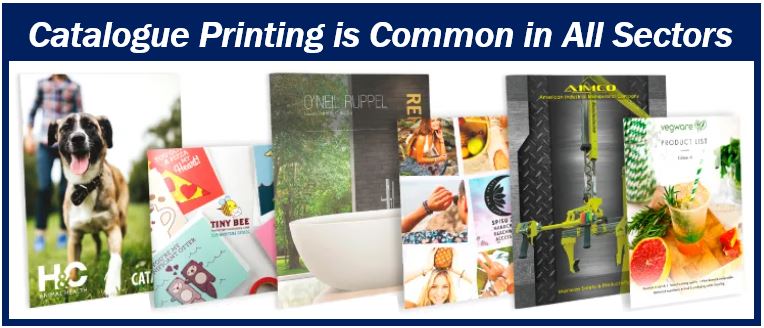Due to the evolution of printing, you can easily print hyper and multi-sensory catalogs. In addition to the graphics, proper catalog printing helps boost the communication content and “transfer” the DNA of the organization itself. Since there are thousands of printing styles, effects, inks, ennobles. So it’s not always simple to pick the best ones. You will get ideas, approaches, and inspirations in this article to help you understand how to pick the best form of print for your catalog.

Choosing the Best Format
The print format is among the first crucial decisions to make since the size and layout of the paper also give the audience a first impression of what they will find in the catalog. The advice is to use a convenient format and not overdo it with the number of pages.
Various printing formats are available these days. A rough surface may express concrete or natural, polished beauty, and prestige, etc. For the same purpose, it is now possible to select shades, special inks, and upgrades capable of simultaneously expressing a quality search to several senses, which are translated to the same products communicated.
Offset and Digital Printing
If you’ve already printed a catalog, you’ve undoubtedly heard of offset and digital printing. Qualitative is the crucial difference between the two techniques. The offset ensures tremendous color respect and better detail. The fact remains that today even, digital printing-of quality-has advanced to the point of delivering a well-made printed product.
The second difference has to do with the intent. Offset printing is always the ideal alternative for large runs or more desirable prints. In contrast, digital printing, which is valued at a CAGR of 6.45% over the next three to four years, is more suited for limited runs and simplified printed products. These variations in print needs can be efficiently managed and maybe created in multiple versions with catalog software solutions, allowing businesses to tailor their approach according to the specific requirements and objectives of each project, ensuring both quality and cost-effectiveness.
Despite these differences, including in terms of cost of production, the choice of printing type is related to the subtle details and specificities of the various projects. For this reason, only those interested in exchange or superpartners can identify and suggest the best solution.
Custom Offset Printing: Details That Communicate
Leaflets, brochures, cards, and catalogs produced using offset printing can be personalized to an entire degree possible. And each aspect allows discerning and interacting better and more. Choosing one card to print over the other relates to the business and its values.
You can express elegance and quality with matt or glossy coated sheets. For recycled or uncoated paper, you pay attention to the atmosphere and the “eco” spirit. You can differentiate yourself with unique or colorful papers and get noticed. Each card has its purpose, but you can sense the right one. That’s why it’s necessary to touch it with your hand.
How Can Inks Make The Difference?
Each ink tells a different and unique story, in which the characters are the senses. With the new wave of water-based or UV inks, it is possible to improve the sensitivity of paper, even more, offering brightness and chromaticity to everything: from the cold of iron to the heat of wood, from the transparency of the diamond to the fullness of gold, with the same zeal.
Types of Paper for Printing Catalogs
Choosing the right paper for catalog printing is a critical decision. As the paper is a tactile element, it is not only the support of your images; it also conveys sensations; here are some tips for choosing the best paper for a company catalog.
-
Glossy or Matte Coated Paper
It is the most used paper for catalogs and the one that best prints photographs. Coated paper has a mineral layer covering the paper, providing a smooth finish on correctly printed images.
-
Offset Papers
Also called “uncoated,” they are papers in which the fiber of the paper is noticeable. These papers have more inferior print quality, they do not provide such a sharp image, and the shadows are darker.
-
Recycled papers
It is paper in which pulp from recycling is used for their manufacture. It does not have a good print quality, but it is very suitable for those companies that want to convey an image of concern for the environment and modernity.
-
Paper for the Cover of a Catalog
You can use the same thicker paper, 300 grams, for example. A white cover is gorgeous, but it runs the risk of getting dirtier; a black cover shows more traces and scratches. For this reason, we recommend laminating them so that they are protected.
Conclusion
Offset and digital are both effective methods of catalog printing. Each of them has unique advantages depending on the requirements of the project. If you need more significant project runs, hundreds or thousands, or use a specific, brand-centric Pantone ink, offset printing is the only way to go.
You may also use a much broader range of custom paper and specialized inks, such as metallic or neon inks, in the offset process.

